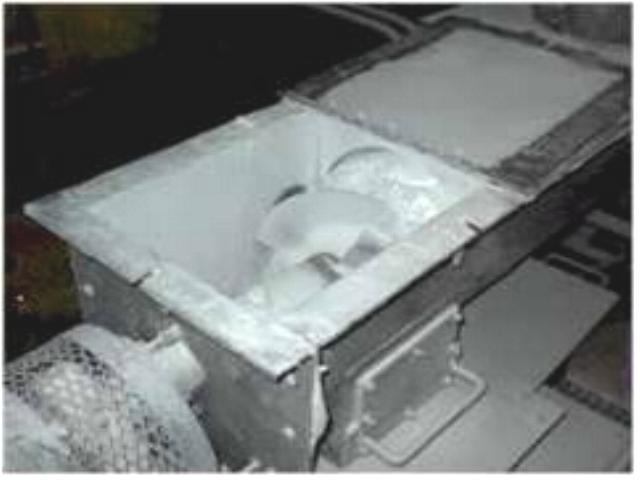November 6, 2013

Carbon black and titanium dioxide (TiO2) are two of the most difficult powders to handle in bins, hoppers, and feeders. You may conclude that, as the title of this article indicates, designing a handling system for these "nasty" materials is not black and white. If you are not familiar with TiO2, it is a fine white powder that provides whiteness and opacity to paints, coatings, plastics, paper, inks, fibers and food and cosmetics.
The reason that it is used so widely as a whitener is its high refractive index and small particle size. The refractive index is a measure of a material's ability to bend light. TiO2 is simply an excellent reflector. Most TiO2 is nearly 100% minus 325 mesh and has a bulk density of about 50 lb/cu ft. There are various grades of TiO2 supplied by the major manufacturers and curiously enough, the better the grade, the more difficult it is to handle.
Carbon black on the other hand is an engineered compound and is an essential ingredient in the production of tires and other rubber goods. It also is used as a pigment in printing inks, paints, and plastics. Carbon black is produced by pumping oil through a furnace, where it is heated above 2000°F. This process produces a carbon black fume. The fume is filtered and then treated with water to create pellets. Unfortunately, these pellets are usually friable and when broken down, create fines which are difficult flowing.
Problems
Both materials mentioned above are pigments and are difficult flowing (as are many other pigments). They require constant maintenance to ensure reliable flow. When you handle these materials, you may experience severe build up on bin or hopper wall surfaces. The reason these materials are such good pigments is that they cling, smear, etc., to many surfaces. However, when this happens in a bin, you can experience bridging, ratholing, flooding, segregation, etc. These are typical problems of materials that flow in funnel flow. In funnel flow, some material moves while the rest remains stationary.
Solutions
As I have discussed in previous articles, 2B finish stainless steel sheet is an excellent surface for solids to slide on. However, if the TiO2 or carbon black fines adhere to that wall surface, your product is no longer sliding on the smooth stainless surface. The coated (and therefore rougher) surface would typically require extremely steep hopper slopes to ensure a mass flow pattern. Mass flow is the preferred flow pattern because all the material moves whenever any is discharged (no ratholes or floods and segregation is minimized). The screw feeder photo shows typical buildup problems experienced with TiO2 at the discharge end of the screw feeder. The storage vessel experiences similar buildup problems.
Conical opening size requirements of 4 ft are not unusual for these materials. Hopper wall angles for mass flow are often required to be 80° to 82° from horizontal to ensure flow along the walls. These fine, sticky materials can also buildup on the sliding surfaces over time, eventually stopping flow. Handling these products reliably requires (as always), knowledge of their flow properties and proper design approaches. Wedge-type configurations should be considered because wedge hoppers are more forgiving than cones (i.e. smaller openings required to prevent bridging and shallower hopper angles to ensure mass flow).
When dealing with these type materials, remember to:
• Know your material flow properties
• Design your bin and feeder properly, perhaps using a wedge approach
• Maintain your equipment to prevent the wall surface from building up with product.
Joseph Marinelli is a consulting engineer and president of Solids Handling Technologies. He has been providing testing and consulting services since 1972. As a former consultant with Jenike & Johanson Inc., he has years of experience testing powders and designing bins and feeders for reliable flow. He lectures frequently on the topic of powder handling, and has published several papers including and article in a chemical encyclopedia and two in a food powder book.
Joseph Marinelli
Solids Handling Technologies
Fort Mill, SC
803-802-5527
[email protected]
You May Also Like


